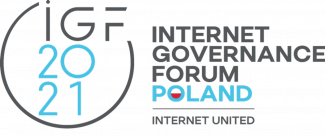Building capacities for meaningful access to the internet
8 Dec 2021 08:30h - 10:00h
Event report
The session discussed how to develop capacity-building processes that can benefit communities. This is not only a matter of digital, but of understanding how the internet infrastructure works and how to maintain and develop it.Mr Rob McMahon (University in Canada) shared the example of the Digital NWT project in north Canada which supports remote indigenous communities. The focus is on community-based digital literacy training using a ‘train the trainer’ approach. They work with communities and adult educators at the college level to co-create digital literacy courses on different topics and then share those materials on a free, open-access platform from where they educate smaller communities. The topics include how to use devices, how to search the internet, etc. The project aims to map the connectivity levels of these communities by using tech devices, and evaluate their internet speeds so they can share this information with regulators in Canada.
Similarly, the Internet Society (ISOC) provides courses on internet governance, as well free learning resources related to network operations and global routing security. Their course on internet service providers (ISPs) will launch next year and will focus on the technical components of internet exchange points (IXPs), and their business and social sustainability. They are also working with the Institute of Electrical and Electronics Engineers (IEEE) on redeveloping courses on community networks, including one on building community networks and one on community assessment so that people can understand how and if they should develop community networks where they live.
For the International Telecommunication Union (ITU), capacity building is an investment in future sustainability. ITU has invested heavily in training indigenous people on how to use technology and achieve their social and economic development, and making indigenous communities self-sustainable as tech promoters in telecommunications and broadcasting. But for beginning any training, communities need access to the internet, and at affordable prices.
It’s important to have community networks maintained and managed by communities that can address connectivity issues. For communities to develop their own networks and connectivity projects it is necessary to have training and capacity-building processes so that they can exchange knowledge and experiences. Such training enables communities to obtain the necessary knowledge and skills for the installation, maintenance, and operation of these networks.
Connectivity can be enhanced via community networks by keeping in mind the 5 Ls: low tech, local support, low energy, low maintenance, and low learning curve. Technology, economy, and education training can improve access for communities.
While building community networks, it is necessary to look at the role of central governments in planning, but the implementation should be done by the local government in collaboration with local communities. The one-size-fits-all approach from developed countries does not work in developing countries. The focus should not be on just starting these processes, but also on empowering local communities to be able to run them.
By Mili Semlani
Session in numbers and graphs




Automated summary
Diplo’s AI Lab experiments with automated summaries generated from the IGF sessions. They will complement our traditional reporting. Please let us know if you would like to learn more about this experiment at ai@diplomacy.edu. The automated summary of this session can be found at this link.Related topics
Related event

Internet Governance Forum (IGF) 2021
6 Dec 2021 10:00h - 10 Dec 2021 18:00h
Katowice, Poland and Online
